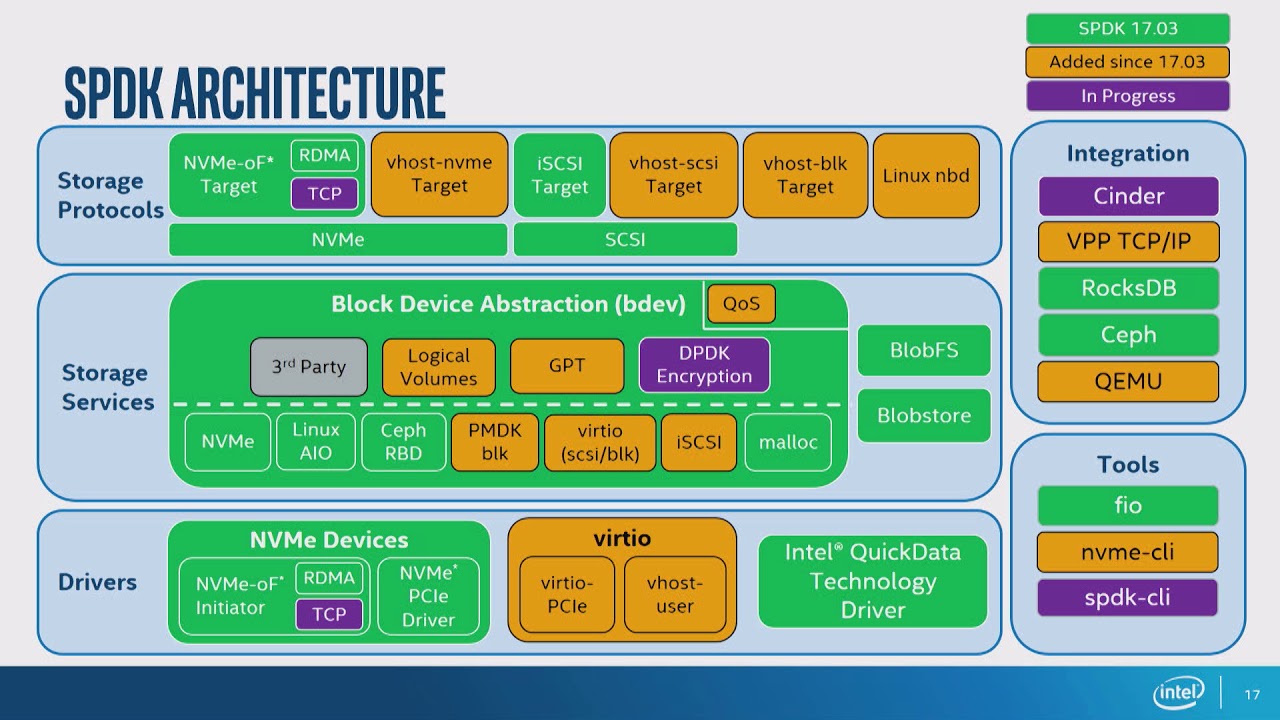In the world of data processing and storage, efficiency and speed are paramount. As data volumes continue to grow exponentially, the demand for faster, more efficient processing technologies has never been higher. Two technologies that have gained significant attention for their ability to meet these demands are SPDK (Storage Performance Development Kit) and DPDK (Data Plane Development Kit). This article delves into these technologies, exploring SPDK and DPDK, their unique features, and how they offer cutting-edge solutions for high-performance data processing.
What is SPDK?
The Storage Performance Development Kit (SPDK) is an open-source set of tools and libraries designed to improve the performance and efficiency of storage applications. Developed by Intel, SPDK leverages user-space, polled-mode drivers to eliminate the overhead associated with traditional kernel-based I/O operations.
Key Features of SPDK
- User-Space Drivers: SPDK operates in user space, bypassing the kernel and reducing context switching overhead. This leads to lower latency and higher throughput.
- Polled-Mode Operation: Instead of relying on interrupts, SPDK uses polling to check for I/O completions. This reduces latency and improves performance, especially under high-load conditions.
- Scalability: SPDK is designed to scale efficiently with multi-core processors, making it ideal for high-performance applications.
- NVMe Support: SPDK provides extensive support for NVMe (Non-Volatile Memory Express) devices, which are increasingly used in modern data centers for their high-speed storage capabilities.
- Frameworks and Libraries: SPDK includes a variety of frameworks and libraries for building storage applications, such as NVMe-oF (NVMe over Fabrics) target and initiator, and a blobstore for managing large storage objects.
What is DPDK?
The Data Plane Development Kit (DPDK) is an open-source software project designed to accelerate packet processing workloads. Originally developed by Intel and now maintained by the Linux Foundation, DPDK provides a set of libraries and drivers for fast packet processing in user space.
Key Features of DPDK
- High Throughput: DPDK enables applications to achieve high packet processing rates by bypassing the kernel and running entirely in user space.
- Low Latency: By using polled-mode drivers and avoiding interrupt-driven I/O, DPDK minimizes latency, making it suitable for real-time applications.
- Wide Device Support: DPDK supports a broad range of network interface cards (NICs) from various vendors, offering flexibility and compatibility.
- Modular Design: The modular design of DPDK allows developers to pick and choose the components they need, optimizing their applications for specific use cases.
- Multi-Core Scalability: Like SPDK, DPDK is designed to scale with multi-core processors, ensuring that applications can fully utilize available CPU resources.
SPDK Technology
SPDK technology focuses on providing high-performance solutions for storage applications. It is particularly effective in environments where low latency and high throughput are critical, such as financial services, data centers, and cloud computing.
SPDK Use Cases
- NVMe-oF Solutions: SPDK’s support for NVMe over Fabrics allows for high-performance, low-latency access to remote storage devices.
- SSD Management: SPDK can be used to build efficient SSD management tools, providing features like wear leveling, error correction, and data protection.
- Database Acceleration: Databases can leverage SPDK to improve I/O performance, resulting in faster query processing and reduced response times.
Benefits of SPDK
- Performance: By eliminating kernel involvement in I/O paths, SPDK significantly reduces latency and increases throughput.
- Efficiency: SPDK’s polled-mode operation and user-space implementation result in lower CPU overhead, freeing up resources for other tasks.
- Flexibility: SPDK’s modular framework allows developers to build customized solutions tailored to their specific needs.
DPDK Technology
DPDK technology is centered on optimizing packet processing for networking applications. It is ideal for scenarios where high packet throughput and low latency are essential, such as telecommunications, cybersecurity, and cloud networking.
DPDK Use Cases
- Network Function Virtualization (NFV): DPDK accelerates the performance of virtual network functions (VNFs), making it suitable for NFV deployments in telecommunications.
- Software-Defined Networking (SDN): DPDK enhances the performance of SDN controllers and switches, enabling dynamic and efficient network management.
- Cybersecurity: High-performance packet processing is crucial for cybersecurity applications like intrusion detection systems (IDS) and firewalls, where DPDK can play a key role.
Benefits of DPDK
- Speed: DPDK’s user-space, polled-mode drivers allow for extremely fast packet processing, crucial for high-performance networking applications.
- Scalability: DPDK’s ability to scale across multiple CPU cores ensures that applications can handle large volumes of network traffic efficiently.
- Versatility: With support for various NICs and a wide range of libraries, DPDK can be adapted to numerous networking scenarios.
SPDK and DPDK: A Powerful Combination
While spdk solutions and DPDK are powerful on their own, they can be combined to create highly efficient systems for data-intensive applications. For instance, a data center might use SPDK for storage acceleration and DPDK for network acceleration, achieving high performance across both data processing and networking layers.
Integrated Solutions
- Hyper-Converged Infrastructure (HCI): Combining SPDK and DPDK in HCI environments can lead to significant performance improvements, enabling faster data access and processing.
- Edge Computing: At the edge, where resources are often limited, using SPDK and DPDK together can ensure that both storage and networking components operate at peak efficiency.
Conclusion
SPDK and DPDK represent the forefront of high-performance data processing technologies. By leveraging user-space drivers and polled-mode operation, they offer significant advantages in terms of speed, efficiency, and scalability. Whether you are looking to accelerate storage applications with SPDK or enhance packet processing with DPDK, these technologies provide the tools needed to meet the demands of modern data environments.
Embrace the power of SPDK and DPDK to build the next generation of high-performance applications, and stay ahead in the fast-evolving world of data processing and networking.
